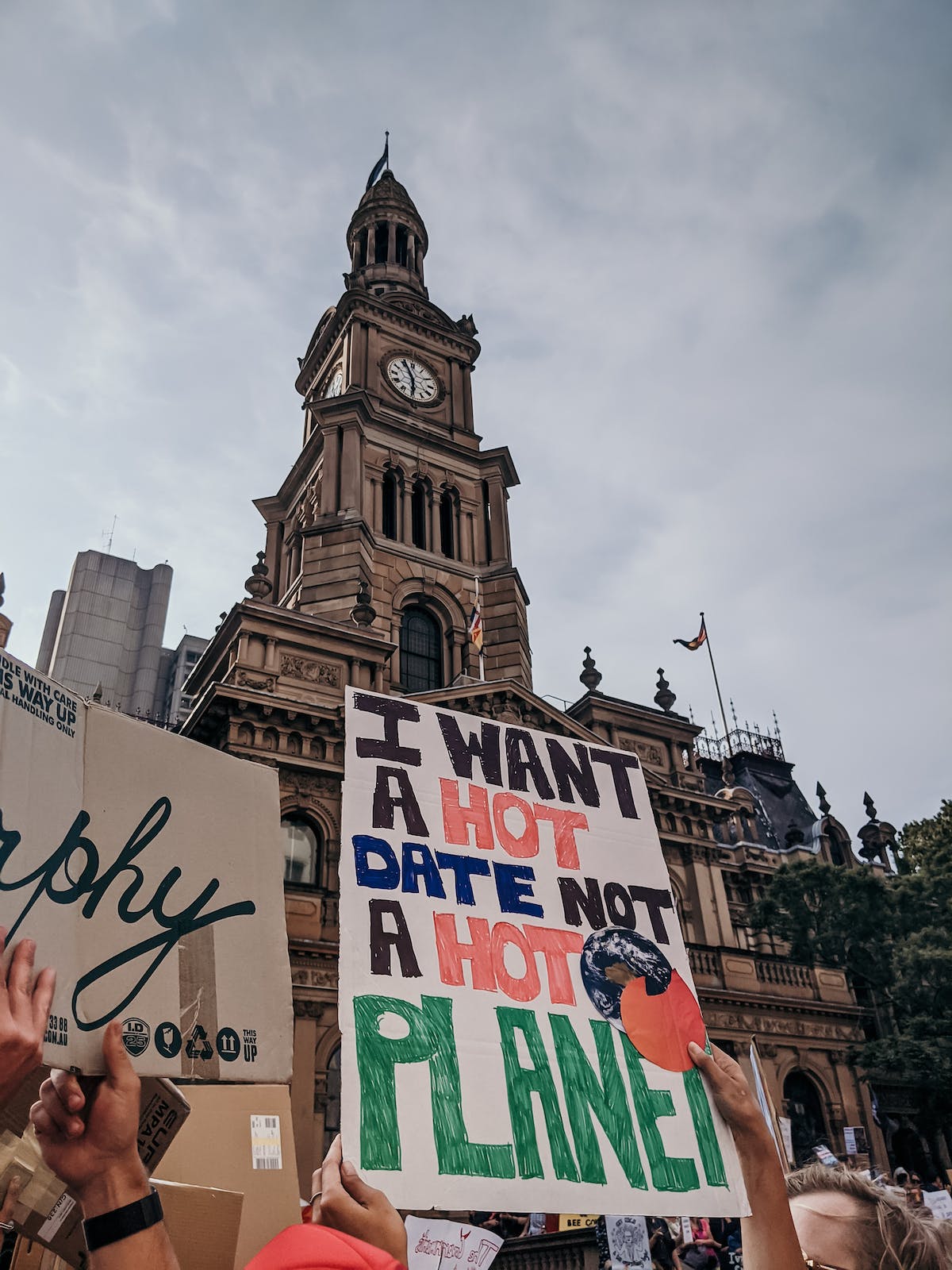Menu
Just Transition Insights, Issue #12, 03/27/2023
By Jonathan Tasini
|

Leading Off: The IPCC Has Blinders On
Right after the most recent global climate change gathering, known as COP 27, we wrote the following about the entire framework of the climate summits and its related forums:
….workers just don’t explicitly figure into the calculations of the parties gathering in the negotiating rooms who bicker over the details of climate change.
More explicitly, in the wake of COP27, unions must confront a fundamental question: why should precious and finite resources (time and money) be spent trying to play within a framework that is entirely oblivious of workers?
The ethos of downplaying, if not outright ignoring, the future of workers in the decarbonization process, apparently, is the prevalent lens for the Intergovernmental Panel on Climate Change (IPCC). The role of the IPCC is to “provide governments at all levels with scientific information that they can use to develop climate policies. IPCC reports are also a key input into international climate change negotiations.”
But, the IPCC isn’t just a body sifting through temperature models and carbon outputs; it is also charged with taking scientific information and offering views on “options for adaptation and mitigation.”
So, a review is in order of the IPCC’s recently released “Synthesis Report (SYR) of the IPCC Sixth Assessment Report (AR6)” that “summarises the state of knowledge of climate change, its widespread impacts and risks, and climate change mitigation and adaptation.” [the bold is added].
Two-thirds of the report is primarily science—written by a large team of experts, it’s an impressive recounting of the status of the planet, and the authors are resolute, clear-eyed, direct and, most important to our discussion here, quite granular and specific. The status of the planet can be summed up in a word: grim.
Where the report gets fuzzy is the sections devoted to mitigation and adaptation. Here are a few specific portions [note: the “confidence” notations are the IPCC’s assessment; bold is added]:
Climate resilient development is enabled when governments, civil society and the private sector make inclusive development choices that prioritize risk reduction, equity and justice, and when decision-making processes, finance and actions are integrated across governance levels, sectors, and timeframes (very high confidence). Enabling conditions are differentiated by national, regional and local circumstances and geographies, according to capabilities, and include: political commitment and follow-through, coordinated policies, social and international cooperation, ecosystem stewardship, inclusive governance, knowledge diversity, technological innovation, monitoring and evaluation, and improved access to adequate financial resources, especially for vulnerable regions, sectors and communities (high confidence).
And:
Adaptation and mitigation actions, that prioritise equity, social justice, climate justice, rights-based approaches, and inclusivity, lead to more sustainable outcomes, reduce trade-offs, support transformative change and advance climate resilient development. Redistributive policies across sectors and regions that shield the poor and vulnerable, social safety nets, equity, inclusion and just transitions, at all scales can enable deeper societal ambitions and resolve trade-offs with sustainable development goals. Attention to equity and broad and meaningful participation of all relevant actors in decision making at all scales can build social trust which builds on equitable sharing of benefits and burdens of mitigation that deepen and widen support for transformative changes.
And:
Integrating climate adaptation into social protection programs, including cash transfers and public works programs, is highly feasible and increases resilience to climate change, especially when supported by basic services and infrastructure.
Here is what stands out to us.
First, the contrast is quite apparent between the very specific scientific information versus the very broad statements around mitigation and adaptation.
Second, the general embrace of “sustainability” is problematic largely because the definition of “sustainability” is very much, in the debate over climate change, in the eye of the beholder. In some arenas a “sustainable” future for workers is viewed as a call for some re-training for jobs in “green” industries, without taking into account whether those jobs will, in fact, mean equal or better incomes.
Third, and finally, there is an obvious glossing over, either intentional or unintentional, of the most clear reality of the global economy, and is most obviously evident in the statement, “Enabling conditions are differentiated by national, regional and local circumstances and geographies, according to capabilities..”. To be sure, there are differences between nations—but those differences are overlaid by a global economic industrial and finance system that, in fact, dictates a quite uniform imperative: find labor at the lowest wage possible.
It is hard to imagine, or structure, a sustainable future built on a “high bar” Just Transition—meaning, a future in which workers can pay their bills and live securely—as long as the current economic system is not explicitly called out for overhauling.
There is nothing mandating that the IPCC stretch itself beyond science to be wise about economics.
But, if it offers up solutions, it has to be far more explicit about this reality: most governments and an overwhelming number of the players in what is referred to as “civil society organizations”, as well as a healthy slice of the private section, take their cues from the IPCC warnings. And, thus, dodging the economic truths reeks of an explicit, or implicit, willingness to accept the economics system as it is—and undercuts the entire principle of a sustainable future for workers.
SPONSOR MESSAGE
A message from the Australian Mining And Energy Union
We are fighting back, not just for ourselves but for the future generation of mineworkers. Workers deserve better. Our families and communities deserve better. Visit us
Spotlight: China Coal Financing Likely Undermines Workers’ Just Transition
Let’s take this on in somewhat reverse order. Coal power projects throughout the globe are being financed by a whole host of economic interests, from banks in the United Kingdom to South Korea to India to the U.S. Like all global financing, the goal is to either make money for shareholders and/or exert/gain influence within a nation.
It is in vogue among Western nations—principally, those allied with the U.S.—to single out China’s economic behavior for criticism (say, around currency manipulation). We tend to point out that the economic trading system is less about ideology and far more about the tug-and-pull of the competition to lure foreign investment.
However, is is true that China is, by far, the biggest financier of coal projects globally—to the tune of 33,480 megawatts, outdistancing by a lot the next biggest player, the United Kingdom, which rings in with 7,200 megawatts. Which makes it important to focus on China, from our perspective of Just Transition.
A “high bar” Just Transition only has a chance of becoming a reality in a place where workers can band together to exercise collective power. In other words, a place where unions are strong—mainly in the workplace, but also in the halls of government out of which, without a doubt, significant financing will have to come for “high bar” Just Transition (in the form of “topping up” incomes and benefits, for example).
Another tool workers’ advocates seek to wield is, in fact, pressuring financial institutions—largely through large private and public pension fund holdings in which unions have some governance leverage—to pull support for companies engaged in anti-union behavior. To date, that pressure has not yielded, to put it kindly, a large list of successes.
At the same time, it’s not a controversial statement to make that China is immune to both the call for respecting labor rights—take the repression against the Uyghurs and their virtual enslavement in forced labor camps in Xinjiang—or any pressure on its governmental financing arms in other countries, such as the Export-Import Bank of China or the China Development Bank.
The point here is: workers in Indonesia, Vietnam, Brazil or other countries where China is financing coal projects will have yet one more obstacle to attaining “high bar” Just Transition—and an even bigger challenge is that obstacle may often operate in a less-than transparent fashion.
We will need to watch this development over time.
Ideas: ESG, Sustainability and Just Transition
The current rage—we mean that in two ways, something in vogue and something causing anger—is over environmental, social, and corporate governance, better known by its acronym, ESG. In some corners, ESG is an affront, seen as an off-shoot of “wokeness”—and, bizarrely, even at the heart of the recent tremors in banking that led to the collapse of Silicon Valley Bank and Signature Bank, and instability inside other banks.
In other corners, there is a bit of a rumble about who qualifies for a high ESG rating, who doesn’t:
Hundreds of funds are about to be stripped of their environmental, social and governance ratings and thousands more will be downgraded in a shake-up being pushed through by index provider MSCI.
The impact could be particularly acute in Europe where a growing number of institutions will only invest in funds that are deemed to be compliant with ESG-investing principles. In 2022, ESG exchange traded funds accounted for 65 per cent of inflows into European ETFs, according to Morningstar.
MSCI, which has $13.5tn of assets benchmarked against its indices, is yet to publish the results of a consultation on its ESG ratings. But according to a client note from BlackRock’s iShares arm, the world’s largest ETF provider, seen by the FT, the number of European ETFs with a triple-A ESG rating from MSCI is set to tumble from 1,120 to just 54, while the number with no rating will surge from 24 to 462.
The changes are part of a push by index providers to tighten up the criteria for what qualifies as an ESG-compliant fund amid pressure from regulators concerned about the prevalence of so-called “greenwashing” as the sustainable finance industry expands rapidly. The sharp reduction in funds with top ratings could mean that ESG-focused investors have fewer places to put their cash, potentially driving up the price of assets with a sustainable label.
What is absolutely clear is that the criteria for a “top rating” does not embrace a “high bar” Just Transition for workers. A high rating on “labor rights”, for example, mostly translates into stances against child labor, slave labor and a general embrace of International Labor Organization principles for unions. All of that is fine and good.
But, that is not the same as ensuring that millions of workers are promised a future that includes a corporate commitment to equal or better wages in new jobs necessitated as fossil fuel-related jobs go away. And without that promise, we would question whether “sustainability” has any meaning for workers’ incomes—because without a “high bar” Just Transition, the specter of thousands of economic wastelands is the more likely future facing communities around the globe.
So, it is imperative that ESG proponents be more serious about what they actually mean—and that means folding in these four principles we advocate here:
- All workers effected by decarbonization must be made whole in overall income and benefits, and, at the same time, communities must be robustly financed to encourage job creation that will benefit men and women equally and spark economic development that makes up fully for any decline in losses to the tax base or other income that decarbonization-related activities contribute.
- Where new jobs are created, those jobs must offer at least 100 percent equivalent wages to disappearing good-paying, union-wage jobs and offer every worker full-time, good-paying work, not precarious, low-paying, irregular work.
- Smart economics should drive “high bar” Just Transition: workers who lose incomes will not be able to spend at their local stores or keep up with monthly bills, thus, undercutting overall demand for goods and services, which will sap the economy of its vitality. This guarantee should be reinforced with a global “green” minimum wage and a reduction in work hours as society re-imagines labor in the future economy.
- Corporations and unions must negotiate on equal footing over jobs losses and, in the same vein, unions must be part of the planning for new jobs—with full incomes paid until a paycheck from a new job begins.
Or else… leave the above out and not be surprised when workers’ advocates roll their eyes at the reality reflected by the various ESG indexes.
Opinion: Just Transition’s Caste System
by Jonathan Tasini
Not everyone is created equal when it comes to the debate over Just Transition for workers. In fact, I think that the relative constituencies in this discussion can be better thought of as comprising a climate change Just Transition caste system.
We normally think of a caste system as being structured based solely on birth. And, to some extent, that is true with the Just Transition caste system—too often, where one sits in the Just Transition caste system is based on birth because of generations of a lack of economic and social mobility, especially the lack of social and economic mobility for workers of color and Indigenous peoples.
At the top of the caste system are the owners of capital. They will not have a concern about adapting to climate change because they will exercise their current station to protect their jobs, wealth and power.
The next levels in the caste system are not always ordered by a strict hierarchy. You could be substantially a member of one caste but still have a foot in another caste. Here’s the easiest example: the next level below the owners of capital of a Just Transition caste system would be a combination of “consumers” and “professional” workers whose livelihoods, absent other upheavals (for example, armed conflict or a banking crisis) are not going to change in a way that threatens the basic outlines of the way they live.
That doesn’t mean that, within this caste, one won’t have costs associated with decarbonization—presumably, “consumers” will initially pay for some aspects of the shifts (either through dedicated taxes to fund adaptation and mitigation) and, in some cases, some upfront costs as new energy systems are out into place, but with the theory that, over time, new energy sources are far cheaper.
And note the point that “professional” workers whose livelihoods are not going to change dramatically. This is all relative and needs clarification—jobs might be preserved but, looking at Just Transition for workers in a holistic, community-based fashion, this caste will also bear cost if we fail to embrace a “high bar” Just Transition: good-paying fossil-fuel-related jobs evaporating will hurt the tax base and general economic health of a community which will inevitably touch the lives of everyone with the exception of the owners of capital who will always have enough resources to hide in gated communities.
Of course, the lowest caste, historically, in economics transitions are always the workers in the industries undergoing upheaval and change. When I use the word “lowest” I mean those who are most exploited and at the mercy of any economic change, whether that was the unset of the Industrial Revolution or today’s de-carbonization plans.
It’s worth thinking about the wise approach of a “high bar” Just Transition with a caste system in mind because it more clearly explains why there is much trepidation about the process in front of us. Our task, then, is to disrupt the caste system.
Tasini is the founder and executive director of Just Transition For All
Links
Global Energy Monitor: the Global Energy Monitor (GEM) develop and shares information in support of the worldwide movement for clean energy.
Table of Contents
Leading Off
The IPCC Has Blinders On
Spotlight
China Coal Financing Likely Undermines Workers' Just Transition
Ideas
ESG, Sustainability and Just Transition
Opinion
Just Transition's Caste System
Links
This Week's Links
Can’t wait to subscribe to the newsletter?
*We post information pursuant to the U.S. Fair Use Doctrine, and applicable international standards, in order to advance the knowledge base and education of our global audience. We endeavor to include the original link to documents. However, upon requests of original authors of posted documents, where explicit use permission is not granted, we will remove documents if it is determined continued use is not appropriate. We also reserve the full right to not include, or remove, any data inconsistent with our mission.

















